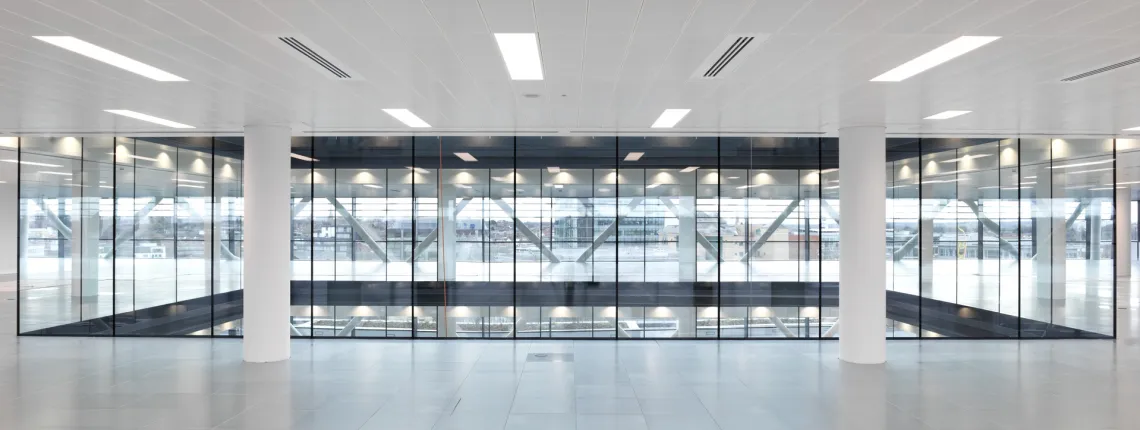The Three Essential Goals of Fire Protection

Fire is one of the most destructive forces a building can face, making fire protection an essential aspect of architectural design and facility management. Effective fire protection is fundamental to safeguarding lives, property, and business continuity. It encompasses a combination of preventive measures, structural design, and safety systems to minimise fire hazards.
A well-implemented fire protection strategy prevents fires, ensures safe evacuation, and limits fire spread, aligning with national building codes and safety regulations.
The 3 Objectives of Fire Protection
At its core, fire protection revolves around three key objectives: The safety of life, protection of property, and continuity of operations. Understanding these goals is essential for creating buildings that are resilient to fire hazards while maintaining compliance with fire safety laws.
Goal 1: Life Safety
The primary objective of fire protection is to safeguard human life. Every building should be designed with evacuation strategies in mind, ensuring that occupants can exit safely in the event of a fire. Key elements that contribute to life safety include:
-
Compartmentalization: Proper compartmentalization restrict fire in the fire zone leaving non-fire zones safe to evacuate
-
Escape routes: Clearly marked and unobstructed exit pathways allow for a swift evacuation.
-
Safe refuge areas: For individuals who may be trapped, designated safe zones provide temporary protection until rescue efforts arrive.
-
Access for emergency personnel: Firefighters and first responders need clear access to affected areas to carry out rescue operations efficiently.
Properly implemented fire prevention objectives prioritise the well-being of individuals by integrating early warning systems, smoke control measures, and emergency response protocols.
Goal 2: Property Protection
Fires not only pose a threat to human life but can also cause irreversible damage to buildings, equipment, and valuable assets. A well-structured fire protection strategy minimises this risk by:
-
Compartmentalisation: Fire-resistant materials such as Vetrotech’s CONTRAFLAM help contain fires within specific areas, preventing them from spreading to adjacent spaces.
-
Automatic suppression systems: Sprinklers and fire extinguishers provide an immediate response to flames, reducing damage.
-
Structural integrity measures: Buildings designed with fire-resistant glass materials can better withstand extreme heat and limit the risk of collapse.
This fire prevention objective ensures that buildings can be preserved even in a fire, reducing financial losses and preventing neighbouring structures from being affected.
Goal 3: Continuity of Operations
For businesses and essential services, fire-related interruptions can lead to severe financial and operational setbacks. Fire protection plays a crucial role in ensuring that activities can resume as quickly as possible after an incident. Key factors include:
-
Limiting operational downtime: Preventative measures reduce the extent of damage, allowing businesses to recover swiftly.
-
Protecting critical infrastructure: Fire-safe design ensures that essential facilities, such as data centres and power systems, remain functional.
-
Compliance with insurance and legal requirements: Businesses that adhere to fire protection regulations avoid financial penalties and liability issues.
This fire protection objective safeguards people and property and ensures that organisations can continue operating with minimal disruption.
How Fire Protection Goals Work Together
While each goal of fire protection serves a distinct purpose, they must work in unison to create a robust safety strategy. Preventing fires, limiting their spread, and ensuring human safety are interconnected efforts that require a combination of design, technology, and awareness.
A building with effective fire-resistant materials but poor evacuation planning is still at risk, just as a structure with strong suppression systems but inadequate compartmentalisation may still sustain severe damage. This is why fire safety planning must be comprehensive, integrating multiple layers of protection to address all potential risks.

Challenges in Achieving Fire Protection Goals
Despite significant advancements in fire protection technologies that support achieving major fire prevention objectives, several challenges persist. These include:
-
Ageing infrastructure: Older buildings may not comply with modern fire safety standards, making retrofitting necessary.
-
Lack of awareness: Many organisations fail to prioritise fire safety training and preparedness.
-
Regulatory compliance: Fire codes and standards vary by region, and enforcement may be inconsistent.
Compliance plays a critical role in addressing these challenges. Regular training, inspections, and upgrades to fire protection systems are essential for maintaining high safety.
Strengthening Fire Protection for a Safer Future
Fire protection is a critical aspect of building safety, with fire prevention objectives at its core. Organisations and individuals can create a safer built environment by prioritising life safety, protecting property, and ensuring operational continuity. Implementing robust fire safety measures, staying compliant with evolving regulations, and investing in fire-resistant materials, such as fire-resistant glass, can significantly reduce fire-related risks.
Vetrotech’s Design Solutions (VDS) plays a crucial role in enhancing fire safety by providing compartmentalisation, heat resistance, and visibility during emergencies. By integrating high-performance fire-rated glass solutions, businesses and building owners can strengthen their fire protection strategies and ensure greater safety for occupants and assets.
